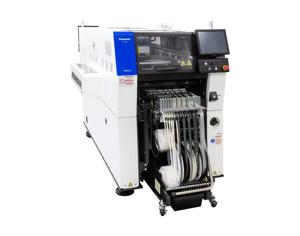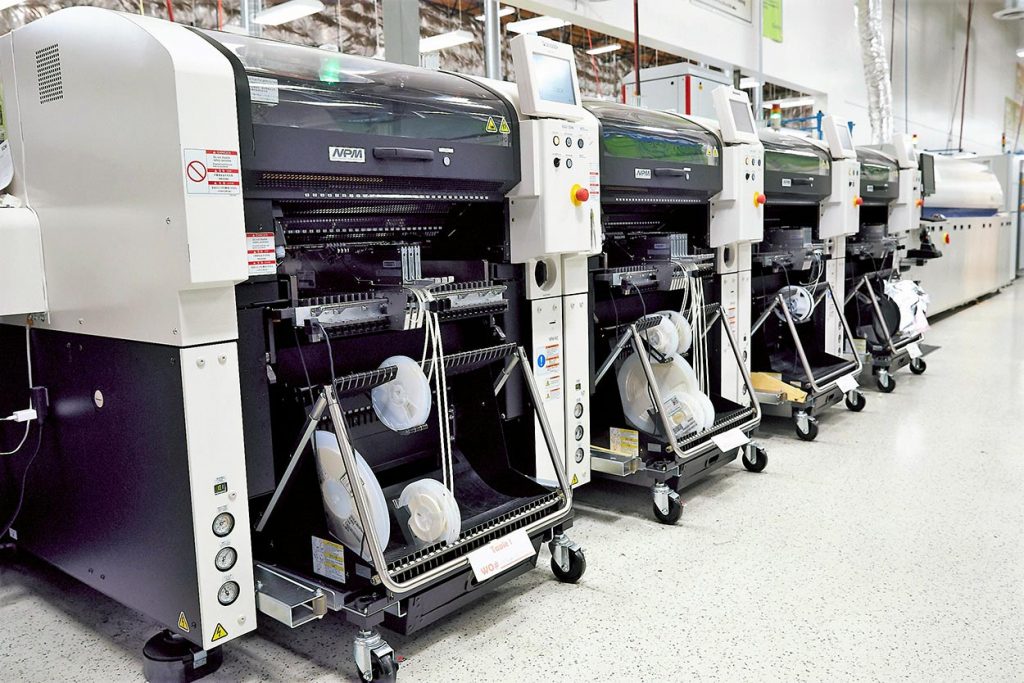Content Menu
>> Introduction to Panasonic SMT Technology
>> Key Features of Panasonic SMT Pick and Place Machines
>> Advantages of Using Panasonic SMT Pick and Place Machines
>> Applications of Panasonic SMT Pick and Place Machines
>> Case Studies: Success Stories with Panasonic SMT Machines
>>> Case Study 1: Consumer Electronics Manufacturer
>>> Case Study 2: Automotive Supplier
>> Frequently Asked Questions (FAQs)
>> Conclusion
Founded in 1918, Panasonic has established itself as a leading SMT pick and place machine supplier, offering advanced solutions that enhance productivity and precision in electronics assembly. The company's machines are designed to accommodate various components, ensuring flexibility in production lines. With a commitment to innovation, Panasonic continues to develop technologies that meet the increasing demands of the electronics industry.
Key Features of Panasonic SMT Pick and Place Machines
1. High Speed and Efficiency
- Panasonic's models, such as the CM602 and NPM-D3A, can achieve placement speeds exceeding 100,000 components per hour. This high throughput is crucial for meeting the demands of modern manufacturing environments. The ability to maintain such speeds without compromising accuracy is a significant advantage for manufacturers looking to optimize their production lines.
2. Advanced Recognition Systems
- Equipped with high-speed recognition cameras, these machines can accurately identify components and adjust placement strategies in real time. This feature significantly reduces errors and improves overall quality. The recognition system can handle various component shapes and sizes, allowing for seamless transitions between different production runs.
3. Flexibility in Component Handling
- The machines support a wide range of component sizes and types, from small 0402 chips to larger connectors. This versatility allows manufacturers to switch between different products without extensive downtime. Additionally, Panasonic's machines can handle both standard and custom components, making them suitable for diverse applications.
4. User-Friendly Interface
- Panasonic's machines come with intuitive software that simplifies programming and operation, making it easier for operators to manage complex assembly tasks. The graphical user interface (GUI) allows users to visualize the entire process, enhancing understanding and reducing training time for new operators.
5. Integration with Other SMT Equipment
- These pick and place machines can seamlessly integrate with other SMT equipment such as stencil printers and reflow ovens, creating an efficient production line. This integration minimizes manual handling of PCBs and components, further increasing productivity.
6. Real-Time Monitoring and Diagnostics
- Panasonic machines are equipped with real-time monitoring systems that track performance metrics such as speed, accuracy, and downtime. Operators can quickly identify issues and make adjustments on-the-fly, reducing the risk of prolonged disruptions in production.
Advantages of Using Panasonic SMT Pick and Place Machines
- Increased Productivity: The combination of speed and accuracy leads to higher output rates. Manufacturers can meet tight deadlines without sacrificing quality.
- Cost-Effectiveness: By minimizing errors and reducing the need for manual intervention, companies can lower their operational costs significantly.
- Enhanced Quality Control: Advanced sensors and cameras ensure that each component is placed correctly, reducing the likelihood of defects. This level of precision is critical in industries where reliability is paramount.
- Scalability: As production demands increase, Panasonic machines can be easily scaled up or adapted to meet new requirements. This adaptability ensures that manufacturers can respond quickly to market changes.
- Reduced Footprint: Many models are designed with compact layouts that save valuable floor space in manufacturing facilities while maintaining high performance.

Applications of Panasonic SMT Pick and Place Machines
Panasonic's pick and place machines are utilized across various industries, including:
- Consumer Electronics: Assembly of smartphones, tablets, laptops, televisions, and other electronic devices requires precision placement of numerous small components.
- Automotive: Production of electronic components for vehicles such as control units, sensors, and infotainment systems demands high reliability.
- Industrial Equipment: Manufacturing of control systems for machinery involves complex assemblies that benefit from the accuracy of Panasonic's machines.
- Medical Devices: Ensuring precision in critical healthcare applications like diagnostic equipment or life-support systems is vital; thus, these machines play a crucial role.
- Telecommunications: High-speed data transmission devices require precise assembly of various electronic components.

Case Studies: Success Stories with Panasonic SMT Machines
Case Study 1: Consumer Electronics Manufacturer
A leading consumer electronics manufacturer implemented the Panasonic NPM-D3A in their production line to address increasing demand for smart devices. By utilizing this machine's high-speed capabilities alongside its flexible component handling features, they were able to reduce assembly time by 30% while maintaining a defect rate below 0.1%. This improvement not only enhanced their output but also allowed them to launch new products faster than their competitors.
Case Study 2: Automotive Supplier
An automotive parts supplier faced challenges with component placement accuracy in their electronic control units (ECUs). After integrating the Panasonic CM602 into their assembly line, they experienced a significant reduction in rework costs due to improved placement precision. The machine's real-time monitoring capabilities allowed them to quickly identify potential issues before they escalated into larger problems.
Frequently Asked Questions (FAQs)
1. What is a pick-and-place machine?
A pick-and-place machine is an automated device used in electronics manufacturing to place components onto printed circuit boards (PCBs) accurately.
2. How does the Panasonic pick-and-place machine compare to competitors?
Panasonic machines are known for their speed, accuracy, advanced technology, and robust support network compared to other brands like JUKI or Yamaha.
3. What maintenance do these machines require?
Regular maintenance includes cleaning optical sensors, updating software regularly, calibrating placement heads, and ensuring all mechanical parts are lubricated properly.
4. Can these machines handle large components?
Yes, models like the NPM-D3A are designed to accommodate larger components alongside standard sizes thanks to adjustable tooling options.
5. What industries benefit from using Panasonic SMT machines?
Industries such as consumer electronics, automotive manufacturing, industrial equipment production, medical device assembly, telecommunications infrastructure all benefit significantly from these machines.
6. How does real-time monitoring improve production efficiency?
Real-time monitoring allows operators to track performance metrics continuously; this capability helps quickly identify bottlenecks or malfunctions that could disrupt production flow.
7. Are training programs available for new operators?
Yes, Panasonic offers comprehensive training programs covering machine operation basics through advanced troubleshooting techniques tailored specifically for new users.
8. What is the typical lifespan of a Panasonic pick-and-place machine?
With proper maintenance practices followed diligently by operators over time—typically around 10-15 years—these machines can remain highly effective throughout their operational lifespan.
9. How do I choose the right model for my needs?
Factors like production volume requirements; types & sizes of components being handled; available floor space; budget considerations should all be evaluated when selecting an appropriate model from Panasonic's range.
10. What kind of support does Panasonic provide after purchase?
Panasonic offers extensive customer support services including installation assistance; ongoing technical support via phone or online chat; access to replacement parts when needed ensuring minimal downtime during repairs or upgrades.
Conclusion
The Panasonic SMT pick and place machine stands out as a premier choice for manufacturers looking to enhance their production capabilities. With its combination of speed, accuracy, flexibility, ease-of-use features along with robust integration options into existing workflows—these machines address evolving needs within modern electronics assembly lines effectively.
As technology continues advancing at an unprecedented pace within this sector—investing in reliable equipment like those offered by reputable suppliers such as Panasonic becomes increasingly essential for staying competitive while delivering high-quality products efficiently across various industries worldwide.



















